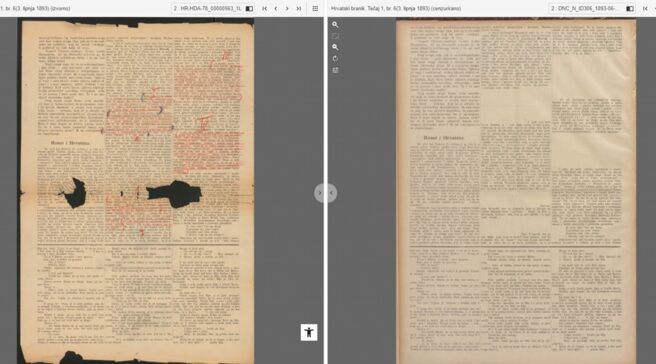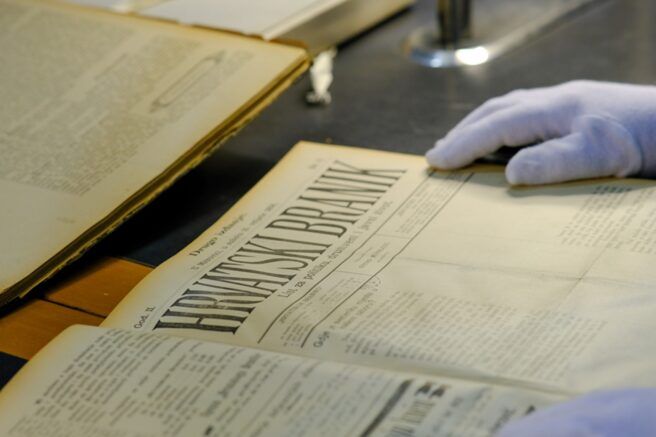To Write Freely (https://digitalna.nsk.hr/pisatislobodno/) – a portal on the censorship of periodicals at the end of the 19th and beginning of the 20th century in Croatia is a new online portal within the Digital Collections of the National and University Library in Zagreb (NSK), created as a result of a joint project by NSK, the Croatian State Archives, and the Zagreb City Libraries. It has been publicly available since May 3, 2024, as a contribution to the celebration of World Press Freedom Day.

Media freedom is undoubtedly one of the most important pillars of modern democratic society. However, in the early period of journalism in the regions of present-day Croatia, this freedom was regulated by strict press laws that entailed an active censorship policy. At the end of the 19th and the beginning of the 20th century, newspapers were the primary source of information for the broader public, namely the literate citizens. Intended as a corrective tool, the newspaper’s censorship was a regular practice prescribed and regulated by numerous laws. Original editions of newspapers were preserved as evidence in court proceedings and attached to court files. These files, created by administrative and public authorities, have been preserved as archival fonds in the Croatian State Archives in Zagreb. Censored periodicals, which were intended for public reading and distribution, were most often stored in libraries, including the National and University Library and other regional libraries.
The portal features both editions – original and censored – and includes the archival file on censorship, if preserved. By examining the original and censored editions, today we can gain important insights into what was considered hate speech at the time and how the censor of that era influenced its (non)spreading. In cases where one of the editions has not been preserved, the portal highlights this with the label “seeking a copy,” suggesting to users that a copy of the edition surely existed but has not yet been found. This is also an invitation to colleagues from heritage institutions to contribute to the project if they find the missing copies in their collections.

A methodology for documenting cases of censorship was developed as part of the project and will be used in further research of periodicals from later periods. The project, involving experts from the Croatian State Archives, the Zagreb City Libraries, and the National and University Library in Zagreb, continues adding new material to the portal as well as to investigate other titles that were subject to censorship, including those printed by Croatian communities in diaspora, whose distribution in the historical regions of Croatia was banned.
It is to be expected that this project and research portal will encourage further research in the field of historical periodicals and their content, as well as press censorship and hate speech in history and support the critical social role of cultural heritage institutions as major purveyors of and stakeholders in information and knowledge systems.